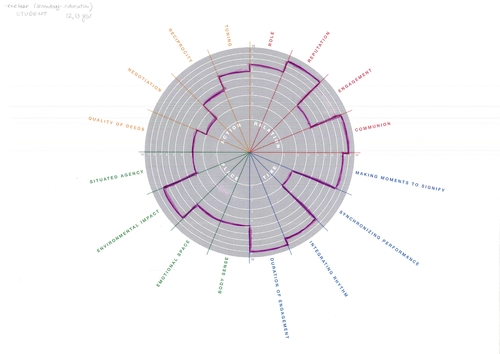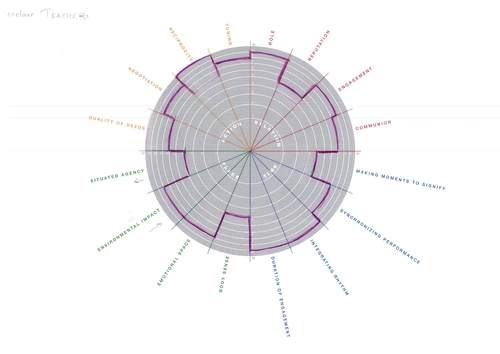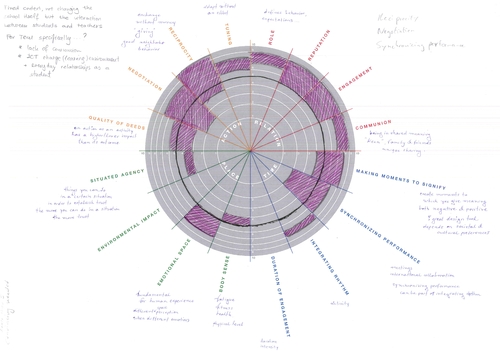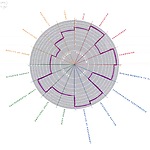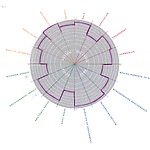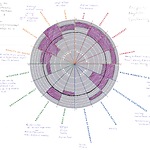Through our sub-system analysis and the information about the current situation, it became obvious that there is a big gap in secondary education, while there is only one high school in the island (O.S.G. De Hogeberg in Den Burg) which may even close in a few years, according to some rumours. The basic problem as it was described in the first chapter is related to the after-high school youngsters: those who want to follow university level education have no other option but leaving the island while there are no job opportunities for those who want to return to Texel after finishing studies. Apart from the direct impact of population shrinkage or the quality of education, this situation possibly affects more aspects of texelaars daily life, such as youngsters’ development within Texel’s community, family structure, daily activities, perception of life values, social bonds etc.
Trying to detect and describe those impacts at the present situation, the YUTPA framework is being used. As previously mentioned, YUTPA defines the emotional stage of the controlled group, categorized in four main areas; Relation, Time, Place and Action. Each theme has four sub themes which are rated from 0-10. Zero represents the worst performance and 10 the best possible. For example, if negotiation is rated 0, then that group has no voice and is not able to make their own choices. First the YTPA model for students 12-18 years old is determined, followed by a model for the teachers, both of them referring to the present situation. Design space will result where big differences in the rating of each factor appear.
Students
RELATION
Youngsters' behaviour and performance are strictly determined by a small controlled community in which they have a quite defined role (7). Since at that age youngsters already know what their next educational step will be, this role gets even more specific. And not only in the school environment but also in the rest of their daily life: for example, those who are going to attend MBO or HBO studies are possibly getting interested or engaged on more practically oriented or hands-on activities. Those who are going to leave the island on the other hand may steadily start quitting their role, not as students but as members of Texel’s community, meaning stop taking part in local events and activities. In this same scenario, bonds between youngsters and their families are affected as well, either becoming stronger or weaker in the realization that they won’t live close to each other anymore.
Closely related to the “role” factor, reputation (9) can strongly characterize students of 12-18 age in two ways: either related to their performance in the classroom or as a member of a social group. The first case is easy to imagine; a student performing well within his/her role as a student gets good reputation as such. Similarly, a student doing not well or even just misbehaving in class gets a bad reputation for the specific role.
It is common that in a typical classroom there are students not so willing to be engaged in class or activities (5) due to their lack of interest, therefore engagement is rated average. Given the “exodus” of youngsters to the main land after high school, engagement in activities or projects related to the island is expected to be average to low.
Communion as a factor referring to sharing/exchanging/intercommunicating i.e. developing family or community bonds is rated high (9). It is characteristic that our information (texel research ESD 2014-2015) already mention that each primary school at the 8 different villages they are place at, are already quite introvert, although they all belong to the Texels’ community. However, as explained earlier, relationship of students with their families, friends and community of Texel can be affected by whether a student will leave the island after high school or not.
TIME
It can be said that within a typical classroom, moments are given the significance they deserve (8), and especially in a small community like Texel's where particular kind of relationships are developed, this factor can be quite high.
For an average student, synchronizing performance with their classmates or their teachers although is essential, it is often low (2). From another point of view, synchronizing with other parts of the country (mainland) can also be a struggle.
Integrated rhythm was rated very high, since there is always a schedule that needs to be followed.
The duration of engagement is also high (9); students should be engaged in schools activities during all the school hours.
PLACE
The body sense (5) of students can be considered normal; they go to school by bike and they are having sport lessons. Because school is part of the everyday life, students can show their emotions and physical stage of mind.
However, not everyone feels that comfortable in a common space but it differs from person to person. Thus, the emotional space (5) is rated average. Additionally, Texel is undoubtedly an emotional space for all Texelaars, but the extent on which each of them perceives the island as such, differs. It can be therefore said in general that the design of emotional space is of the utmost importance for strengthening population identity and community bonds.
The students as members of the island community, are directly affected by environmental issues; environmental impact is rated high (8).
On the other hand, situated agency (4) is low, meaning that the students cannot do much or react in this given situation of a classroom, where the teacher is supposed to have control over everything.
ACTION
The quality of deeds (3) is rated low, while students' work cannot have much impact. Reciprocity is also average to low (4); we assume it to be rather uncommon between young students and is also rare when it is not encouraged systematically either within the family or the community. High reciprocity would be a good indicator of communion in a social level in Texel.
Students do not have a negotiation position (2), but they tuning (6) is necessary but not always high within a classroom.
Figure 3. YTPA analysis for students.
Teachers
RELATION
The role (9) of a teacher is also strictly defined; failing in meeting the expectations as teachers will lead to complaints from the parents and the community disapproval.
Their reputation (5) will probably be less; while there are currently big gaps in Texel’s educational infrastructure as well as staff, teachers are neither prestigious members of the islands’ society nor the least important ones.
Engagement of teachers is rated high (8), since this is a precondition for a properly functioning classroom.
Communion (7) is again high, given the overall strong bonds developed within the families or between friends in a closed community.
TIME
We could imagine a teacher not making moments to signify due to their anxiety to keep up with the school timeframe and schedule, therefore a value of (4) could be representative.
Synchronizing their performance (7) with the students would be high, as well as synchronizing with the mainland in order to get informed of new educational methods.
Additionally, the integrating rhythm (9) is very high, due to a daily schedule that they have to follow. The duration of engagement (9) is also rated high; during the school hours teachers are fully dedicated to the educational procedure.
PLACE
Body sense (4) in this case could be quite subjective and there cannot be validly assessed. Thus it is rated as average (4), while no sport activities are included for them within the school hours.
The emotional space (8) could be quite high while ,as adults, they have the ability to adjust and correct what makes them feel uncomfortable inside the school environment. Similarly to students’ analysis, the factor of environmental impact on them would be high (8). The situated agency is also low in this case (4), while there are certain educational guidelines that teachers should always follow.
ACTION
Quality of deeds (6) is average.
Negotiation is rated high (8) though, while they always have the last word in a discussion with students.
The reciprocity (10) is perfect; a teacher considers his/her profession essential in the development of each student and tries to do the best form them even though working or payment conditions are sometimes poor.
Tunning (8) in the classroom, similarly to children's rating, is also high.
Figure 4. YUTPA analysis for teachers.
Design spaces
After rating the Yutpa factors for both students and teachers, the biggest differences between the two groups in the current situation were revealed. In general, interaction between students and teachers should be improved. The greatest gaps are found in the action and relation; negotiation, reciprocity, quality of deeds reputation and engagement. Next to this, there are differences in synchronizing performance and making moments to signify between students and teachers.
Students must become more willing to participate to the educational procedure, feel more comfortable and intrigued within the school environment. Engagement must reach its higher levels since is represents how successfully students and teachers participate in the class.
There are also areas where the rating was equal or had minimal difference, thus no intervention is required. Duration of engagement and environmental impact are such factors. The design task in this case would be to ensure the mechanisms that are going to maintain these balances.
Defining similarly later on the differences in the YTPA rating for the current and the future system will give us the design spaces to focus on.
Figure 5. Design spaces resulting from the YUTPA analusis.
